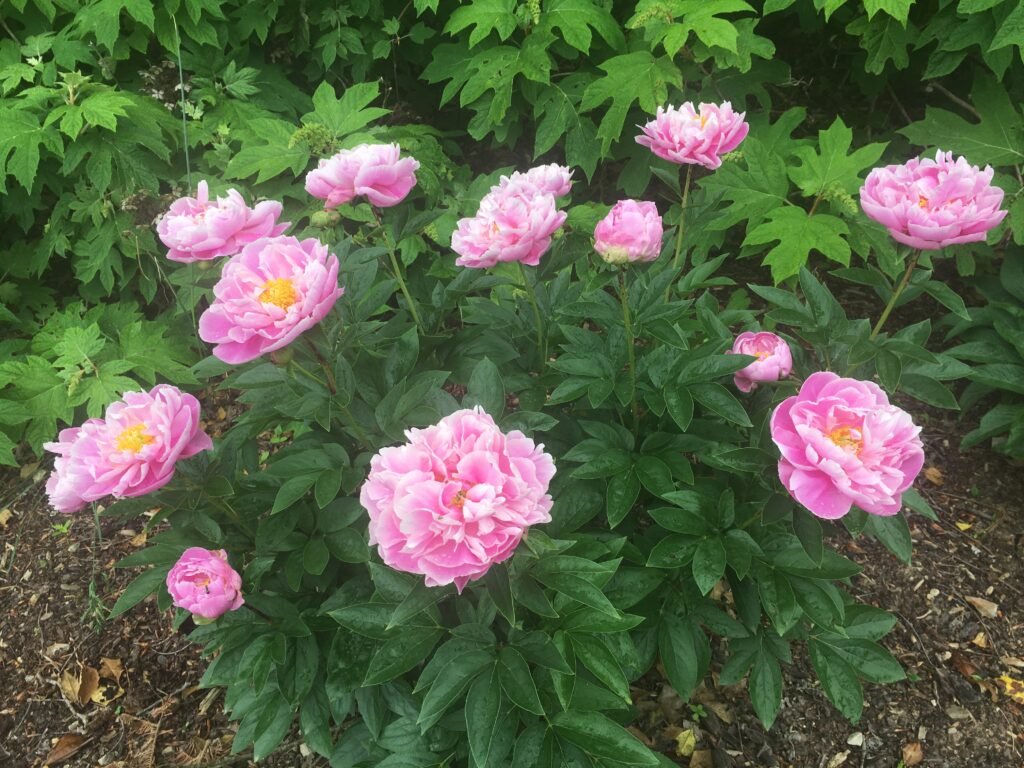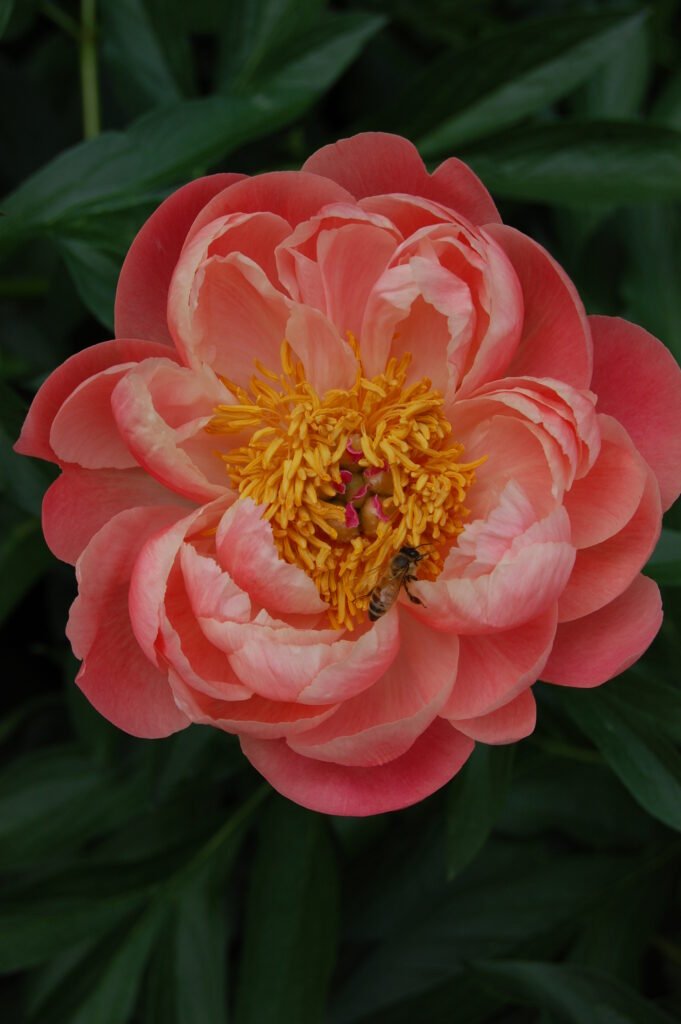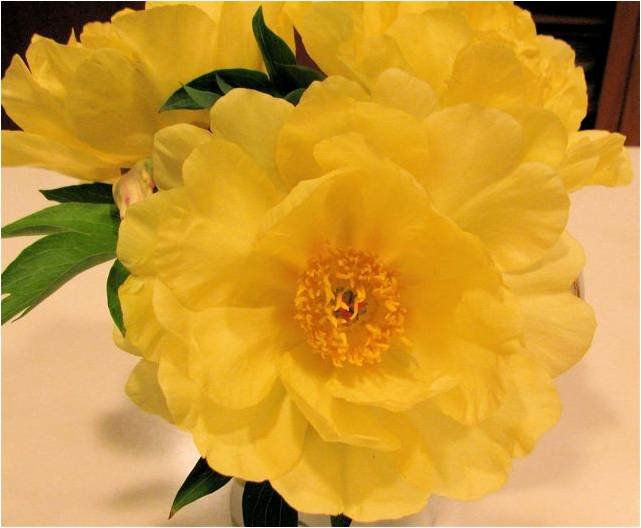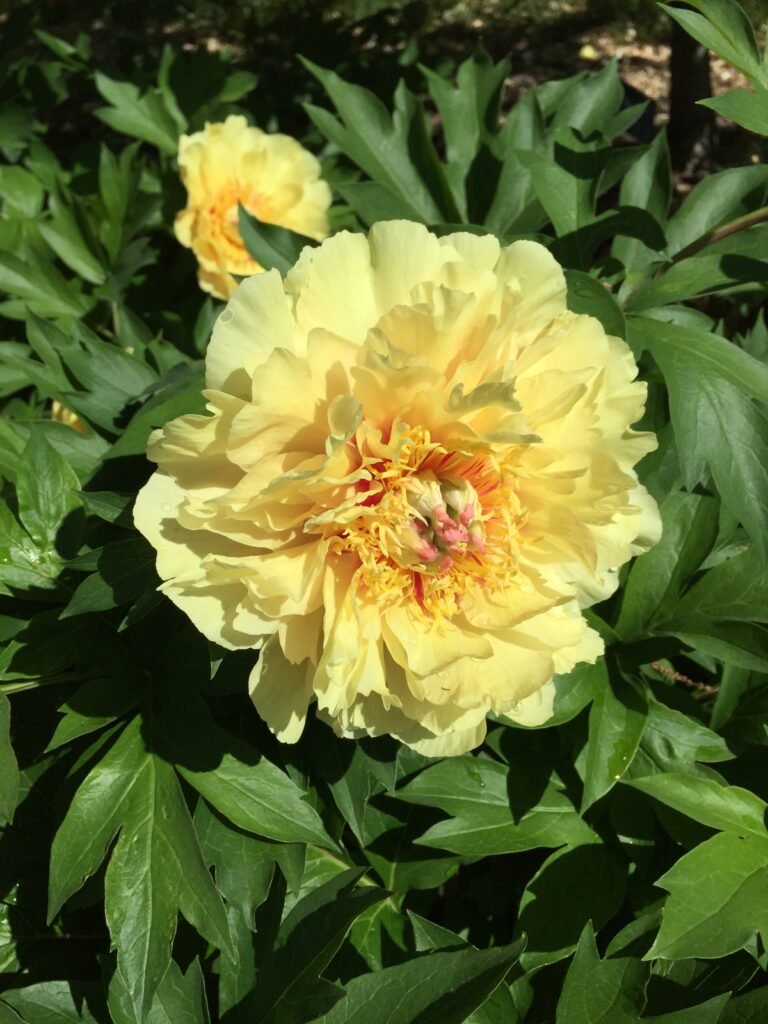Peonies at Yew Dell Botanical Gardens
Peonies at Yew Dell Botanical Gardens
Peonies have long been favorites in gardens. Indeed, historical records indicate that they’ve been cultivated in Asian gardens for more than 2000 years and came to North American gardens in the 19th century. There are few plants that say “garden” more than spring peonies.
But a peony is not necessarily a peony is not necessarily a peony. With more than 40 species spread across native ranges in western North America, Asia and Europe, there’s a whole lot of diversity to be found in the genus Paeonia.
At Yew Dell Botanical Gardens you’ll find four different groups of peonies. And whether you love the heirloom varieties, big and bodacious modern hybrids or the obscure species, we think there’s a peony for just about any garden. Here’s a quick tour though some of our peony collections.
Paeonia lactiflora – Garden Peony
Despite a rather useless common name, these herbaceous garden gems are the types most people know and love. Vigorous stems explode out of the ground in early spring, bearing big, flouncy blooms in colors ranging from white to yellow, pink, red and burgundy. There are singles, double flowered forms and multi color selections.
In the garden, Paeonia lactiflora is easy to grow in just about any sunny location. Once established they are quite drought tolerant, rarely bothered by deer, and can seem to live about forever. They are excellent cut flowers and many offer wonderful fragrance.
One significant knock on this peony species is that, particularly in some of the heavier double flower forms, the flowers can get so heavy that the stems can’t hold them up. They often droop over with the flowers resting on the ground where they are ripe for being hit by inattentive lawn mowing teenagers and resulting in a spray of peony flower dust across the newly mown lawn.
A second potential shortcoming of this species is the occasional summer powdery mildew assault on the leaves. We find that most plants that get hit with powdery mildew do just fine if the impacted foliage is cut to the ground when it starts to look bad. Usually by that time of the season the spring and early summer leaves have sent plenty of nutrition to the underground storage roots for next year’s growth. And besides, we don’t relish the thought of looking at mildewed leaves all through the late summer and fall.
So-called modern hybrids typically show increased vigor and stronger stems, rendering them more resistant to lawn mower abuse. Polyploid (mostly tetraploid) peonies have multiple complete sets of chromosomes compared to the parent types and generally have even better vigor, larger blooms and stronger stems. They are among the best performing of the Paeonia lactiflora forms. Most of the coral-colored forms are polyploids.
There are many other herbaceous peony species that have very similar characteristics to P. lactiflora and in fact many of the so-called garden peonies we grow are actually hybrids of two or more species.
Peak flowering time – April and early May
Rock Garden Peonies

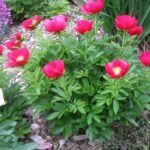
These don’t quite fit anywhere but are worth mentioning because they are just delightful little plants.
Rock Garden Peonies are essentially P. lactiflora and hybrids that are smaller than normal in size and finer in texture. They tend to be early bloomers compared with most herbaceous peonies and offer a bright and varied flower color range.
Peak flowering time – April
Paeonia suffruticosa group – Tree Peony
Ok, not actually a tree . . . learned peony folk actually now refer to this group as Woody Peonies. But regardless of name, this group of species and hybrids grow into woody shrubs to 4-5’ tall and wide over time. They produce large, colorful and lightly fragrant blooms in early spring atop finely dissected, gray-green foliage. Flowers range from white to pink, lavender, burgundy and even yellow. Doubles, semi-doubles and multi-colored forms are available.
Tree peonies bloom earlier than most P. lactiflora selections and in some parts of the US can be damaged by late freezes. They do best in full sun or a bit of light shade from the hot afternoon sun. Foliage of most tree peonies falls in late summer, leaving the plants looking a bit bare and bedraggled. But we think they make up for that shortcoming with their spectacular spring show.
This peony group is best in a kind and gentle garden soil but once established, are quite drought tolerant. They are rarely bothered by deer or rabbits. Their flowers are not very good for cutting.
Peak flowering time – April
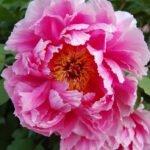
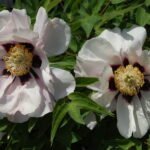
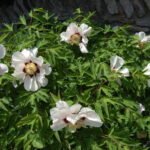
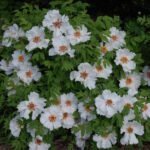
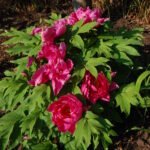
Intersectional Peonies
What to do when you have two great but distinct groups of closely related peonies? Have a peony party!
An intersectional peony is the result of controlled cross of a herbaceous and tree peony. The first successful hybridization of this type was done in the 1940s by a Japanese plant breeder named Toichi Itoh leading to these hybrids sometimes being labeled Itoh Peonies.
Intersectionals tend to grow like traditional herbaceous peonies (they die back to the ground in fall rather than overwintering as persistent woody stems) although some do produce very short, persistent, woody stems at ground level. The flowers are produced slightly later and over a longer period, and the foliage remains in much better condition than many P. lactiflora types. There are whites, yellows, pinks, reds, burgundies and even some multicolors. Singles, semi-doubles and doubles are available. Intersectional peonies combine the best characteristics of both parents and are becoming more widely known.
One of the limitations of intersectional peonies for many years was their slow propagation. But recent advances in tissue culture propagation have made it possible to now produce these gems and offer them for sale at reasonable price points. They have been by far the best selling peonies through Yew Dell’s Plant Market and event-based sales.
Peak flowering time – April and May

